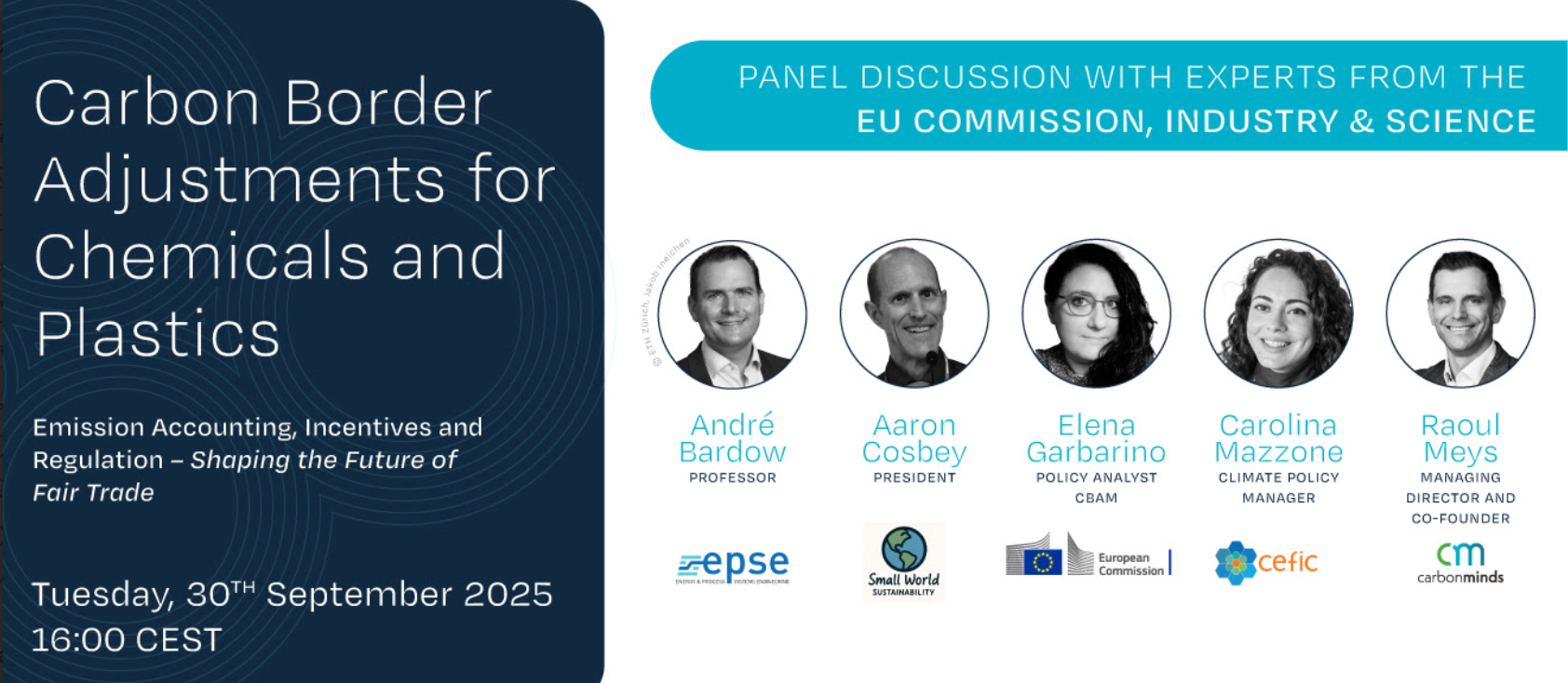Carbon Border Adjustments for Chemicals and Plastics
What was of interest at the Carbon Minds webinar for CBAM?
Here there are some key notes I took during the webinar:
A collaborative model developed with ETH Zürich evaluates how CBAM treats embedded emissions from chemical production outside the EU.
The analysis finds CBAM currently covers only 50–60% of those embedded emissions.
Imported ethylene or polyethylene producers pay for just over half their embedded emissions, while fully EU-based supply chains bear 100% of the carbon cost.
This imbalance effectively penalizes local production, creating a net negative by encouraging downstream emissions shifts or relocation of production outside the EU.
The coverage gap stems from excluding upstream emissions tied to fossil feedstocks (coal, natural gas, naphtha, methanol, ethane); including these would raise CBAM’s coverage to about 95%.
Incorporating upstream feedstock emissions is technically challenging but vital for closing the coverage gap.
The European Commission is assessing scope extension under the upcoming Omnibus package to integrate these upstream emissions.
Until CBAM achieves full value-chain inclusion, it remains ill-suited for complex sectors like chemicals, where single-product treatment misses multiple interlinked processes.
Current carbon leakage protection measures under CBAM are insufficiently developed to prevent emissions-intensive activities from relocating.
Essential operational elements are missing: a practical implementation framework that doesn’t overload administrative resources, export handling rules, and direct carbon cost compensation mechanisms.
Developing countries view CBAM as protectionist; their acceptance will depend on transparent, equitable, and practical implementation details.
Ensuring WTO compliance requires CBAM to overcome its inherently discriminatory aspects by anchoring measures clearly in environmental objectives and fair treatment.
From my notes to the my takeaways:
CBAM currently captures just over half of the true carbon footprint in imported chemicals, penalizing European producers and incentivizing offshoring of emissions.
Bridging this gap by including upstream fossil feedstocks and embedding full value-chain coverage is technically demanding but essential to halt carbon leakage.
